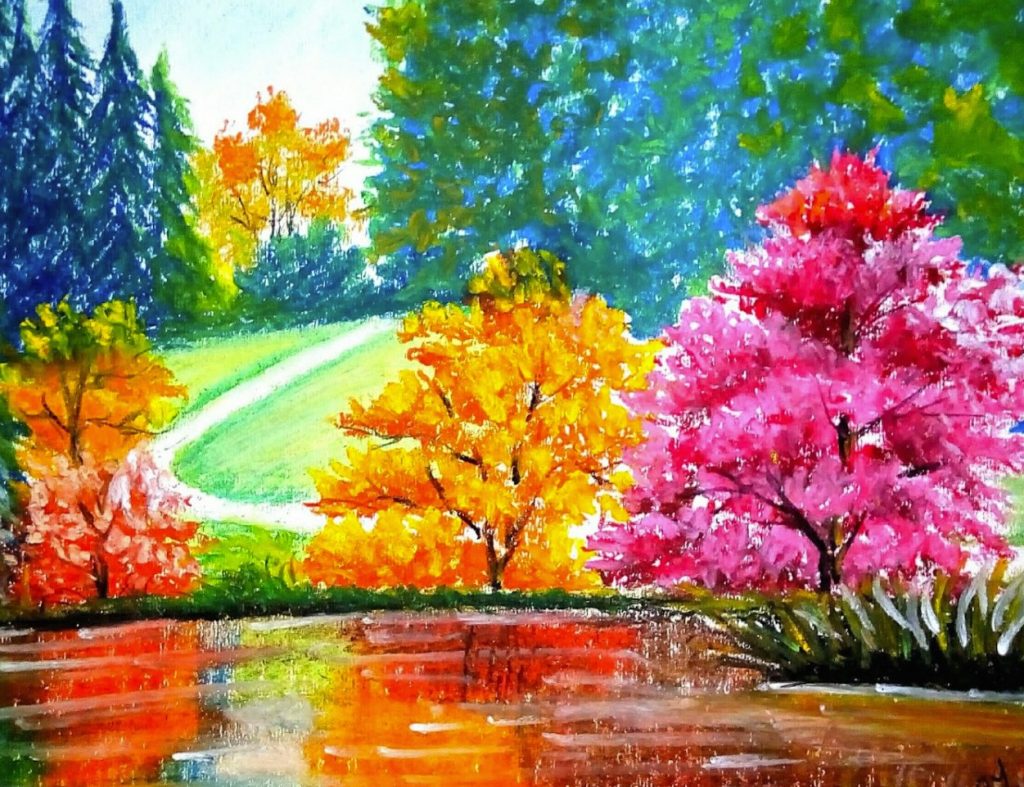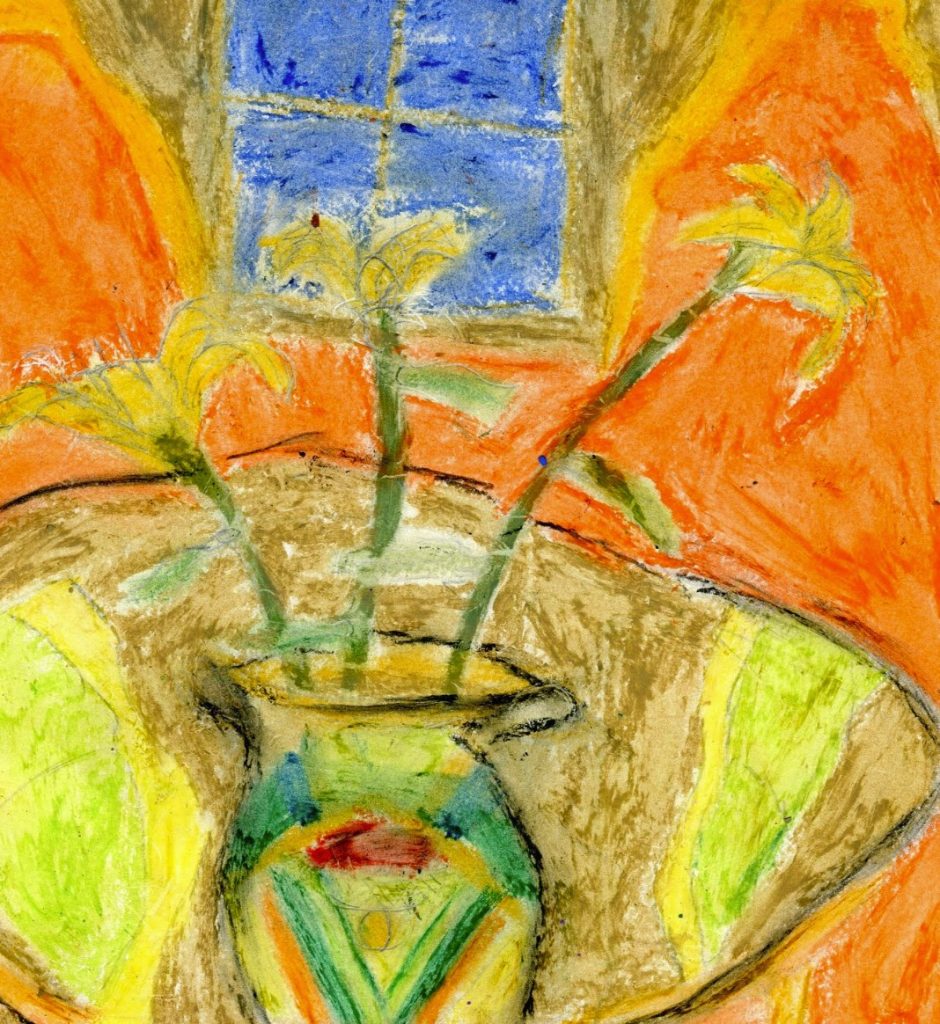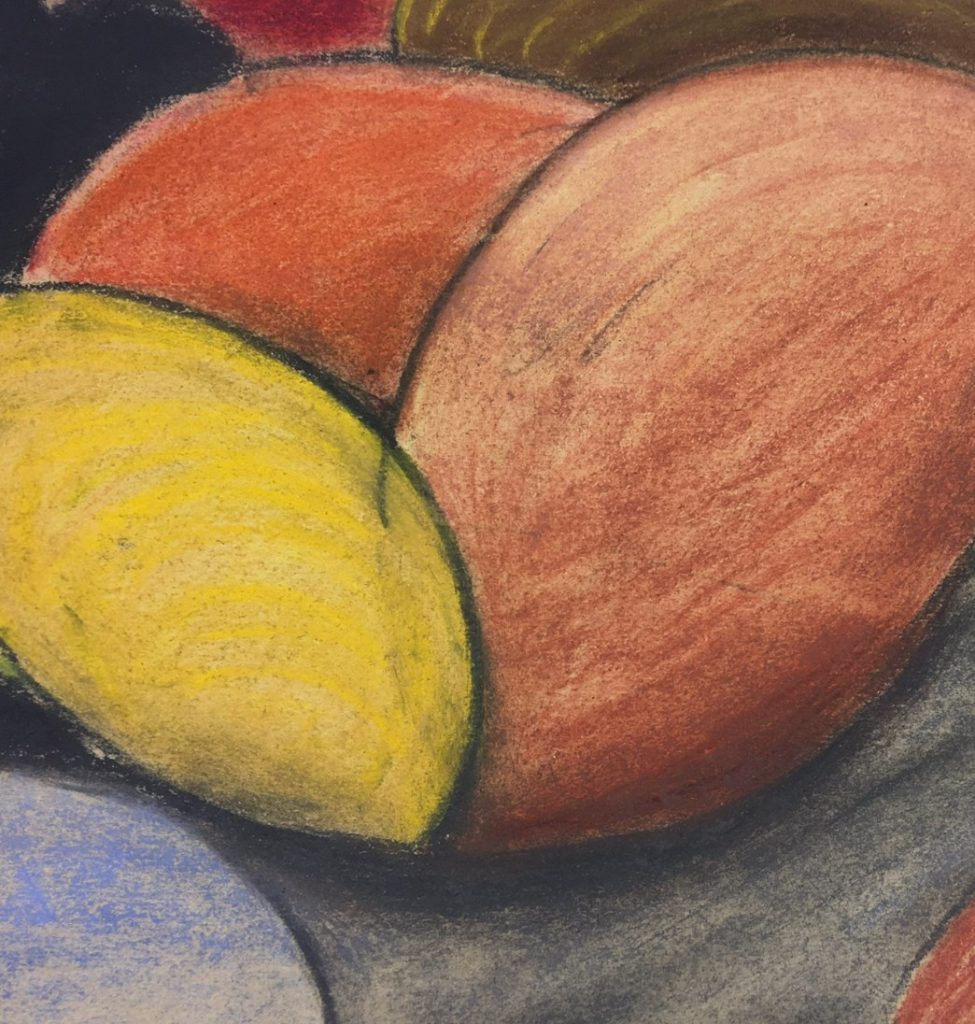Oil pastels have luscious pigments and are blendable. They are an artist’s dream for translating the beauty of landscapes onto canvas. They offer an immediacy that traditional paints do not. This allows you to capture the essence of a scene directly. This guide explores four key techniques for using oil pastels to create captivating landscapes.
Part 1: Building the Foundation – Layering and Color

Establishing Depth: Separating Foreground, Midground, Background
Creating a sense of depth is fundamental for captivating landscapes. Begin by dividing your workspace into three sections: foreground, midground, and background. Utilize darker, cooler colors for the background, representing distance. As you move forward to the midground and foreground, introduce progressively lighter and warmer tones. This natural progression creates the illusion of depth and receding space, inviting the viewer on a visual journey through your artwork.
Color Choices: Evoking Mood and Season
Oil pastels boast a vast spectrum of colors, allowing you to capture the essence of any landscape and evoke specific moods. To create a vibrant summer scene, use bright greens, yellows, and blues. For a calming autumn landscape, opt for warm oranges, reds, and yellows. Remember to incorporate cooler tones like blues and purples to depict shadows and add depth within each section, creating a sense of realism and atmosphere.
Part 2: Creating Texture and Dimension

The Power of Strokes: Direction and Variation
The direction and variation of your strokes are important in determining the texture and visual impact of your landscape art.
When using oil pastels, it’s crucial to consider how different stroke techniques can convey specific textures and elements of the scene. Short, choppy strokes are highly effective for rough textures like tree bark or craggy mountains, conveying a sense of ruggedness and depth.
Long, sweeping strokes are ideal for portraying elements like rolling hills or a tranquil sky, evoking a feeling of open space and tranquility. Experimenting with varying pressure while applying the pastels adds an extra layer of depth and dimension. Lighter strokes can create a textured base, imbuing the artwork with complexity and visual interest, while heavier strokes can be used to define specific areas, adding a sense of solidity and volume to the composition. By skillfully manipulating the direction and pressure of the strokes, artists can impart a rich and varied texture to their landscapes, heightening the emotional and visual impact of their artwork.
Layering and Scumbling: Building Realistic Textures
Don’t be afraid to layer your oil pastels! Apply thin layers of different colors to build a more realistic representation of natural textures. For instance, layer greens and blues to create a textured forest floor, or use browns and yellows with light pressure to depict sun-drenched rocks. Scumbling, a technique where you lightly apply a color over another, can add subtle texture and depth to your landscape, creating a more nuanced and realistic representation of the natural world.

Part 3: Capturing the Essence: Techniques for Light and Shadow
Light and Shadow: Defining Form and Depth
Understanding the interplay of light and shadow is essential in creating a sense of form, depth, and atmosphere in your landscape artwork. A grasp of light sources and their effects can guide you in identifying highlights and shadows within the scene. By applying lighter colors to areas illuminated by light and using darker, cooler hues for the shadows, you can effectively convey the three-dimensional aspects of the landscape. Creating sharp contrasts between light and shadow can produce a dramatic effect, drawing attention to specific elements and infusing the scene with a sense of dynamism. Employing softer transitions between light and shadow can evoke a more tranquil and contemplative mood, imparting a sense of serenity to the artwork. Mastering the portrayal of light and shadow in your landscape art enhances the visual impact.
Selective Detail: Balancing Realism and Expression
When creating landscapes with oil pastels, it is crucial to balance realism with emotional impact. While capturing details such as wildflowers, birds, or ripples on a lake is important for creating a sense of realism. It is equally essential to ensure that these details do not overshadow the emotional impact of the piece. To achieve this, it is recommended to use the tip of the oil pastel or a blending tool with minimal pressure to define the finer details. Allowing them to stand out without overwhelming the overall composition. Additionally, maintaining a balance between intricate, detailed areas and softer, blended sections can help create a cohesive and visually engaging landscape. It can effectively capture the essence and emotional resonance of the scene. Remember that each stroke should contribute to the emotional depth of the artwork. Ultimately, evoking a powerful response from the viewer.

Part 4: Experimentation and Practice: Honing Your Landscape Skills
Embrace the Unexpected: Exploring Color and Technique
Oil pastels offer an expansive range of possibilities owing to their unique versatility. Artists should fearlessly venture into experimenting with unconventional color combinations and techniques, embracing the potential for creativity and discovery. By embracing unexpected color mixes, artists can produce innovative and striking effects.
Similarly, stepping out of conventional blending methods and venturing into unusual tools can lead to the creation of exceptional textures and visual elements. Experimenting with water and solvent washes over oil pastels can also expand the artistic repertoire. Embracing experimentation provides insight into the distinctive potential of this medium. It also aids in the evolution of an artist’s individual artistic voice. Through ongoing exploration and pushing the boundaries of traditional use, artists can uncover new dimensions and expressions within their artwork. This ultimately enriches their creative journey and contributes to the development of a distinctly personalized artistic style.

Practice Makes Perfect: Capturing the Majesty of the Natural World
Creating captivating landscapes with oil pastels takes dedication and practice. Start with small studies focusing on specific elements like trees, mountains, or skies. As you gain confidence, attempt larger landscapes, gradually incorporating all the techniques covered in this guide. The more you practice, the better you’ll understand how to translate the majesty and beauty of the natural world onto your canvas with oil pastels. Mastering these techniques and fostering a spirit of exploration will unlock the power of oil pastels to create captivating landscapes. Let your creativity flow freely. Embark on your artistic journey to capture the poetry of nature, one stroke at a time.





